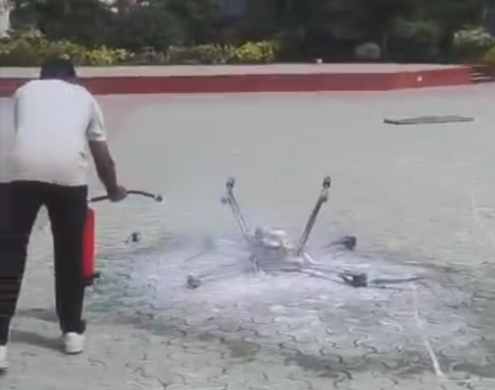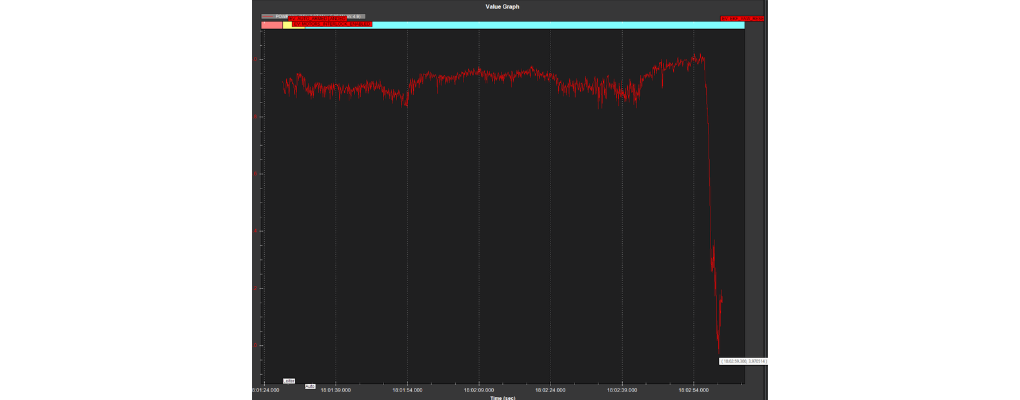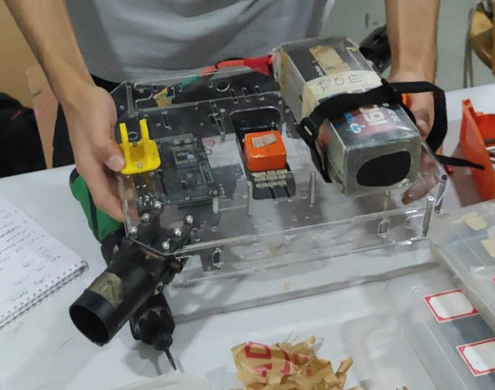Crash to Comeback: The Journey from Kira to Rudra
It was a Sunday afternoon in mid-January. The mission objective was clear: conduct a low-speed flight at 3 m/s, gather accurate repositioning data, and return for post-flight analysis.
Everything was going as expected. Until, in an instant, it wasn’t.


The Crash
Without warning, Kira — our SUAS 2024 airframe and primary testing platform — dropped from nearly 100 feet.
We rushed to the site and quickly removed one of the batteries, placing it in a LiPo-safe bag. Moments later, flames broke out from the frame.
Thanks to our standard protocol of carrying a fire extinguisher, we were able to contain the fire before it spread.
The damage was substantial:
- - Motors — severely impacted on ground contact
- - Onboard electronics — completely burned
- - Airframe — fractured and irrecoverable
- - Flight controller — lost to fire
- Only survivor? The SD card — intact and usable
After securing the crash site and wearing gloves for safety, we returned to the lab — disappointed, but composed. We knew our next steps.
The Diagnosis
Back in the lab, we initiated post-crash procedures:
- - Safely disposed of the damaged battery
- - Stored the salvaged one
- - Extracted logs from the flight controller’s SD card
The cause became immediately clear: an unstable 5V power supply to the Pixhawk. At a critical point in the flight, the voltage dropped below 3V, resulting in an abrupt power loss. With no power to the flight controller, the UAV shut down mid-air, causing the crash.

From Breakdown to Build-Up
The timing couldn’t have been worse — we were deep into our peak testing window. But the situation left no room for hesitation.
We were already halfway through designing our new airframe for SUAS 2025, and this incident served as a clear signal: we had to accelerate development.
It was a tight timeline. But it pushed us to operate with greater precision and urgency.
Despite academic pressure, our team coordinated around the clock — reaching out to sponsors, adjusting CAD designs, double-checking tolerances, and optimizing the frame for weight and stability.
The prototype came together smoothly. With a verified component layout and balanced structure, we moved to fabrication just in time.
Exams followed. But even as we shifted focus to academics, the motivation remained strong.
The moment exams concluded, the team returned to the lab — fully committed. In just a single day, we completed the full assembly of our new UAV.
By evening, Rudra lifted off for the first time. Kira may have burned, but Rudra rose — stronger, smarter, and more compact than ever.

Meet Rudra
Rudra — the howling storm, the fierce wind, the mightiest among the mighty.
Built from scratch, under pressure, and driven by the will to rise again, Rudra isn’t just a drone. It’s a symbol of our resilience — a machine born from failure, designed with clarity, and flown with intent.
Kira may have burned, but from the ashes, Rudra rose — stronger, lighter, and built to lead the next phase of Edhitha’s journey.
From flames to flight — this is how Edhitha bounces back.
